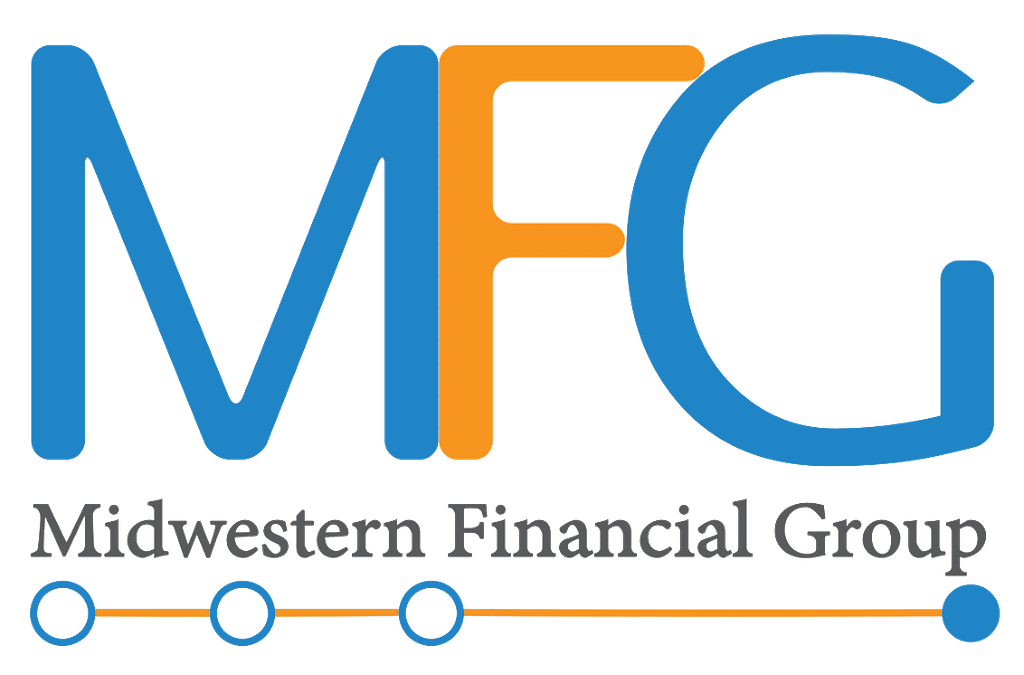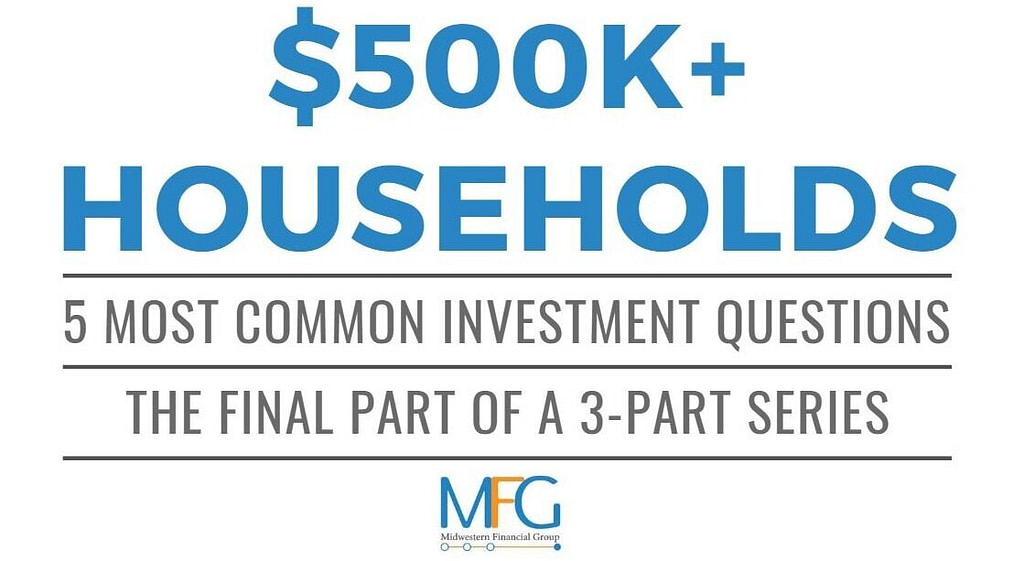Should you be concerned with rising interest rates?
Many investors appear to think so. Rising interest rates have led to the highest stock market volatility we have seen in years and declines in the value of many bond investments.
Aside from the stock market, rising interest rates have an impact across your household budget. The latest increase in rates has changed how much you can expect to pay for your next house, how much you will pay for credit card debt, and adjust how your cash should be invested.
How could these recent changes impact you? Here are a few key areas that rising interest rates can be expected to have an effect:
HOW RISING INTEREST RATES EFFECT MORTGAGE RATES
If you are in the market for a new house, rising rates mean that your borrowing costs are going up. Six months ago, the national average for a 30-year fixed-rate mortgage was 3.7%; today is it 4.4%. A rise of 0.7% may not seem like much, but over the length of a 30-year loan, it can make a big difference.
For example, let’s look at someone considering a $250,000 30-year fixed rate mortgage loan with a 3.7% interest rate:

Not including any taxes or insurance, they would be looking at a monthly payment of about $1,150 for a total cost of the loan at $413,485.
That exact same loan, which was possible to get only 6 months ago, would cost much more today after interest rates have risen:

Now, with mortgage rates at 4.4%, that same loan costs $100 more per month, with a total cost that is $36,000 higher!
What if interest rates keep rising at their current pace? In six months if the interest rate on a 30 year fixed rate mortgage rises another 0.7%, to 5.1%, that same $250,000 mortgage gets even more expensive:

At a 5.1% interest rate, that same $250,000 mortgage costs $1,357 per month, and has a total cost of $487,500.
That means for those looking at a new mortgage, the costs to buy a new home are increasing. And for those with adjustable rate mortgages, your payments may soon be going up. These rising costs may mean it makes sense to pay additional money towards a mortgage each month, or refinance out of an adjustable rate mortgage into a fixed rate mortgage.
RISING RATES AND BOND INVESTMENTS
Fixed income investments play an important role for investor’s portfolios. Historically, if stocks declined, bonds provided a safe source of income and typically rose in value. But the most recent stock market volatility has seen stocks go down in value with bonds following suit.
Why have bonds been going down in value? Rising interest rates.
Six months ago, you could purchase a 10 year treasury bond with an interest rate of 2.1%.
Today, the interest rate on a 10-year treasury bond is approaching 3%, so what would happen if you wanted to sell your 2.1% bond today?
No one would want it. Why would an investor want a 2.1% yielding bond if they could get a 3% yielding bond somewhere else? In order for your low yielding bond to become attractive, the price of the bond would have to drop in order to make its interest payment equivalent to a 3% yield.
Assume you purchased your bond at a price of $1,000, and therefore the bond pays $21.00 in interest each year (remember, the bond yields 2.1%. $21.00 ÷ $1,000 = 2.1%). At what price would you be able to sell this bond today, with interest rates at 3%?
Your 2.1% bill that you purchased six months ago will pay $21 per year for the next 9 years, plus $10.50 for the second half of this year, for a total of $199.50 in interest payments.
A brand new 3% bond purchased today will pay $30 per year for the next 10 years, for a total of $300 in interest payments.
The 2.1% bond will pay out nearly $100 less in interest payments, so you should expect to be able to sell your lower yielding bond at a price around $900 today, a decline of about 10% from when you purchased it just six months ago!
Individual bonds can see their value go up and down significantly based on changes in interest rates. But investors today have other ways of investing in bonds, such as ETFs or mutual funds. And these types of investments are not subject to the same interest rate risk as an individual bond.
Take for example iShare’s Core Aggregate Bond Fund (Ticker symbol: AGG). When an investor buys AGG, their investment is being split up into over 6,600 different bonds. Some of these bonds mature next week, and other mature decades from now.

For AGG investors, as interest rates rise, the fund is consistently reinvesting assets from maturing bonds into now higher yielding bonds. In fact, the index followed by AGG has produced positive total returns over the six interest rate increases that have taken place during the last 40 years. Of course, there is no guarantee that AGG’s performance continues in the future, and a rapid rise in interest rates would likely lead to a year of negative returns for AGG investors.
With the prospect of rising interest rates today, should you forgo bond investments altogether?
Not at all.
First of all, we can reduce our interest rate risk (decline in bond investment value should interest rates rise) by selecting bonds with shorter maturities. If interest rates rise 1%, a treasury bond with a 20-year duration can be expected to drop 20%, while a treasury bond with a five-year duration would drop just 5%. Historically, the decision to shorten bond maturity holdings would mean a significant drop in yields. But, with today’s relatively flat yield curve, an investor would not have to sacrifice much yield. Today, a U.S. treasury maturing in 20 years yields 3.03%, while a five-year treasury yields 2.65%. Investors who may need access to their money in the next few years, or who are sensitive to interest rate risk may find that small reduction in yield well worth the reduced risk.
Lastly, bonds have been, and will very likely remain a great portfolio diversifier. Historically, AGG has had a negative .15 correlation to the S&P 500 index, meaning that for every 1% the S&P 500 has declined, AGG has increased in value by .15%. This correlation has not held up in the most recent stock market sell off in early 2018, but if the U.S. were to enter a severe downturn, investors would very likely buy into safer bonds once again.
RISING INTEREST RATES AND THE STOCK MARKET
Recently, volatility has returned to the stock market as investors fear the potential impact that rising rates could have on their investments.
Why do interest rates effect the stock market? When you invest, you are allocating your money into the investment you believe will have the highest risk adjusted return in the future.
As bond yields rise, their future expected return rises. The line of thinking is that as rates rise higher and higher, investors will gradually move investments over from “risky” stocks to “safe” bonds.
As an example, let’s assume interest rates rise even further, enough to where a 10-year treasury bond yields 5%. At this level, a risk adverse investor may prefer a guaranteed 5% return instead of an uncertain stock market return (which may be less than 5%, or even negative).
And in fact, when Warren Buffett closed up his investing partnership in 1970, he cited this exact comparison. Faced with what Buffett viewed as an overly-expensive stock market, Buffett recommended his investors purchase municipal bonds in the 10- to 25-year range (at the time 20 year Nebraska municipal bonds, specifically cited by Buffett in his letter, had a 6.5% yield). Buffett viewed stocks too risky, and was willing to take a 6.5% yield until stocks became more reasonably priced.
During the 10 years after Buffett recommended his investors get out of stocks and buy bonds, the S&P 500 achieved an annualized return of just 2.08%.

The chart above graphs the 10-year treasury yield (blue line) and the future 10 year annualized returns for the S&P 500 (orange line).
For example, in January 1984 the U.S. 10-year treasury yielded 11.6%, while an investor who would have bought the S&P 500 index in January 1984 would have received an annualized return of 11.0% over the next 10 years.
Although Buffett’s timing in 1970 was good, in general do rising interest rates mean doom for stocks?
Not exactly.
The chart above plots more than 140 years of stock market returns and interest rates. The stock market certainly had low returns in the early 1970s as interest rates rose to nearly 8%. But look further ahead when interest rates reached their peak in the early 1980s, and you will notice that the stock market returns rose as well.
Stocks will be volatile whether interest rates are high or low, but can we make a generalization that stocks will always have lower returns if interest rates rise? No.
RISING RATES AND DEBT
Those who had a need to borrow money over the last decade have enjoyed some of the lowest interest rates we have seen in decades. Cars could be financed for 0% and mortgage rates were under 4%. Today, these numbers are changing.
As interest rates rise, so does the cost of that debt. Today, the national average for a 48-month new car loan is 3.5%, mortgage rates are over 4.5%, and rates on other loans such as credit cards, are rising. These rising rates can lead to much higher costs to service debt. For example, consider a family with $10,000 in credit card debt, that can afford to make $250 per month in payments.
A year ago, their credit card may have had an interest rate around 15%, meaning that it would take 4 years and 8 months of payments to pay off their debt, for a total cost of $13,950.
Today, interest rates on credit cards have increased, and this family’s credit card may now be charging interest rates closer to 19%. With same debt level and payments, a rise in the card’s interest rate to 19% means that it will take the family more than 5 year to pay off their credit card, with a total cost of $15,580.
This means that for families with debt, making debt payments may become a higher priority than they have been in the past. Higher rates may mean it makes sense to pay down the mortgage faster, put more money down on a new car, or cause you to think twice before taking out that next personal loan.
RISING RATES AND SAVINGS
Of course, the rise in interest rates can be good news too. Savers who use money market funds, bank savings accounts, and certificates of deposit (CDs) have all seen their yields rise.
Nationally, the average yield of a 5-year CD has risen from 1.25% to 1.60% just over the last 6 months. Although hardly a level that will make you rich, risk adverse investors or retirees, who typically hold higher allocation in cash, may actually see a return on their cash holdings now. For these investors, as stock markets get more expensive, being able to have a guaranteed return elsewhere may be an attractive option.
IN SUMMARY
Rising interest rates lead to an atmosphere that we have not seen in over a decade, and it may lead to a change to how you spend and save your money. At Midwestern Financial Group, we help clients determine the best use of their cash, navigate the new environment for fixed income investments, and help control rising risks in their equity investments.
Curious what rising interest rates mean for you?



